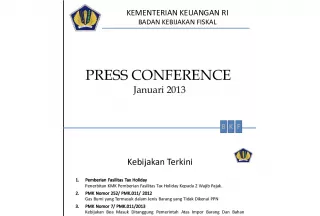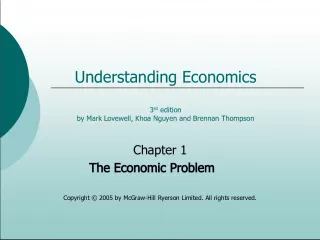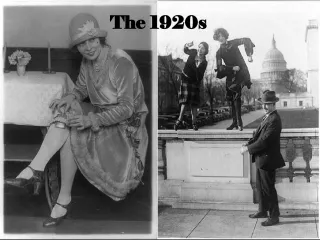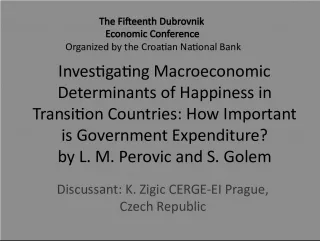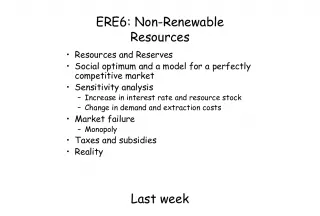The Importance of Import Substitution in Marathon Economic Impact Analysis
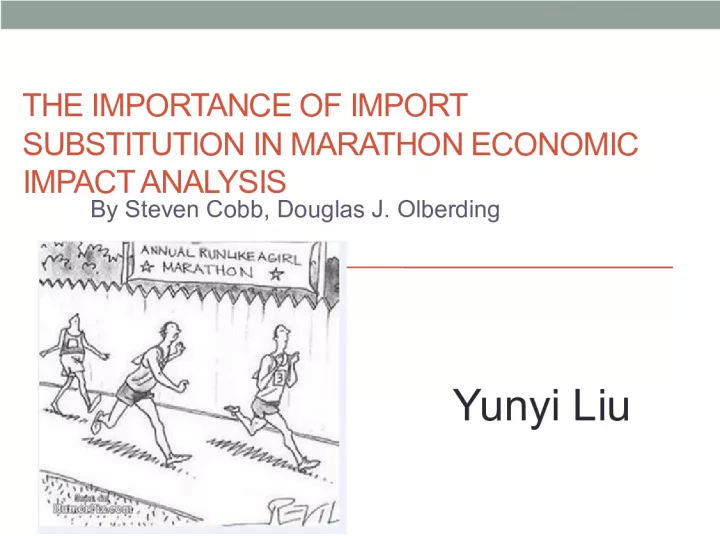

This study addresses the issue of incorrectly calculating or omitting the impact generated by local runners using their home city marathon as a substitute for participating in out-of-town marathons. It focuses on the proper way to account for locally sourced impact in marathon analysis and presents a study of the 2006 Cincinnati Flying Pig Marathon to illustrate this methodology.
- Uploaded on | 0 Views
-
 lilypatel
lilypatel
About The Importance of Import Substitution in Marathon Economic Impact Analysis
PowerPoint presentation about 'The Importance of Import Substitution in Marathon Economic Impact Analysis'. This presentation describes the topic on This study addresses the issue of incorrectly calculating or omitting the impact generated by local runners using their home city marathon as a substitute for participating in out-of-town marathons. It focuses on the proper way to account for locally sourced impact in marathon analysis and presents a study of the 2006 Cincinnati Flying Pig Marathon to illustrate this methodology.. The key topics included in this slideshow are marathon, economic impact, import substitution, local runners, participation rates,. Download this presentation absolutely free.
Presentation Transcript
1. THE IMPORTANCE OF IMPORT SUBSTITUTION IN MARATHON ECONOMIC IMPACT ANALYSIS By Steven Cobb, Douglas J. Olberding Yunyi Liu
2. Abstract Marathon running has experienced considerable growth in recent years, fueled both by an increase in participation rates and by a corresponding increase in the number marathons staged each year. Because marathons have a presumed economic benefit , there also has been growth in the number of marathon-related economic impact studies. However, these studies calculate incorrectly, or omit altogether , an important source of impact: the impact generated when local runners use their home-city marathon as a substitute for participating in an alternative marathon out-of-town . Given that this pattern of behavior is common among marathon runners and the fact that local runners constitute a significant percentage of race participants in most marathons, errors in the treatment of locally based impact is an important problem that must be addressed. This study focuses on the proper way to account for locally sourced impact in marathon analysis, and presents a study of the 2006 Cincinnati Flying Pig Marathon to illustrate this methodology.
3. Background The marathon is a long-distance running event with an official distance of 42.195 kilometres (26 miles and 385 yards),that is usually run as a road race . The event was instituted in commemoration of the fabled run of the Greek soldier Pheidippides , a messenger from the Battle of Marathon to Athens. Purpose: health, charities, economy
4. import substitution Government strategy that emphasizes replacement of some agricultural or industrial imports to encourage local production for local consumption , rather than producing for export markets . Import substitutes are meant to generate employment , reduce foreign exchange demand , stimulate innovation , and make the country self-reliant in critical areas such as food , defense, and advanced technology .
5. Economic Impact of Marathon Held throughout major cities Determining economic impact: incremental direct spending & multiplier effects Import Substitution: We call this phenomenon import substitution because it is analogous to the situation in international trade in which a countrys residents substitute purchases of domestically produced goods for imports.
8. Marathon Economic Impact Methodology Per runner impact Crompton, Lee and Shuster (2001): Exclusion of locals Significantly underestimates Actual spending problematic 3 fundamental parts: Spending that would not have occurred if marathon had not taken place Hypothetical spending Model of local economy( size and industrial mix of the metropolitan area and the sector in which the direct spending takes place)
9. Cincinnati Flying Pig Marathon Collection of races Marathon and half marathon 4,178 finishers representing roughly 86% of registrants for that race. ( 60% non-local------40% local) 45% of local finishers would have ran elsewhere 23% locals entertained out of town guests
10. The population and survey sample characteristics
11. Spending totals for non-local participants
12. impact estimates
13. Criticisms/Observations Locally impact ignored Underestimate or overestimate locally impact use of either faulty data or unrealistic multipliers Actual local spending: $135/per person Not including hypothetical spending: economic impact would be understated by 25%
14. Conclusion Incorrect to ignore locally sourced impact argued that careful economic impact analysis should take into account the possibility of this effect.(Identification of groups and Surveys) even small city



